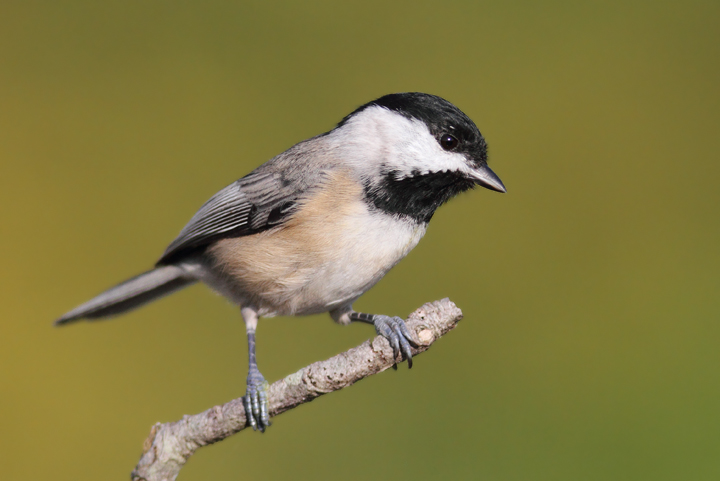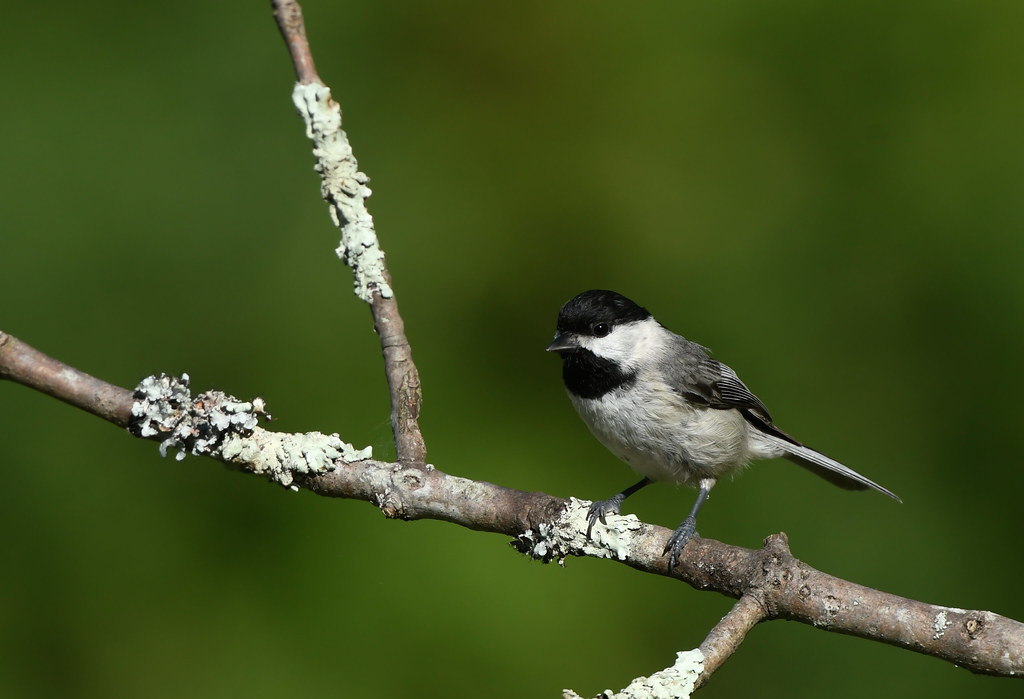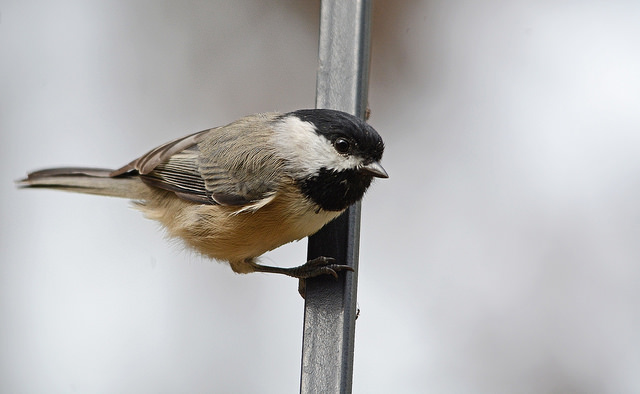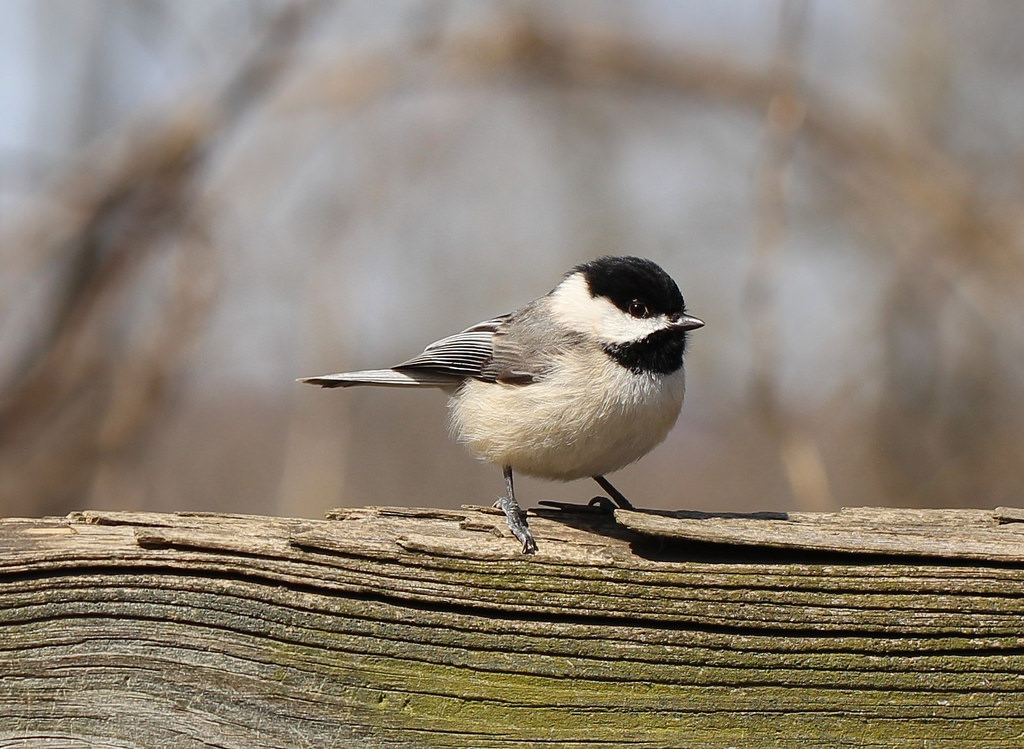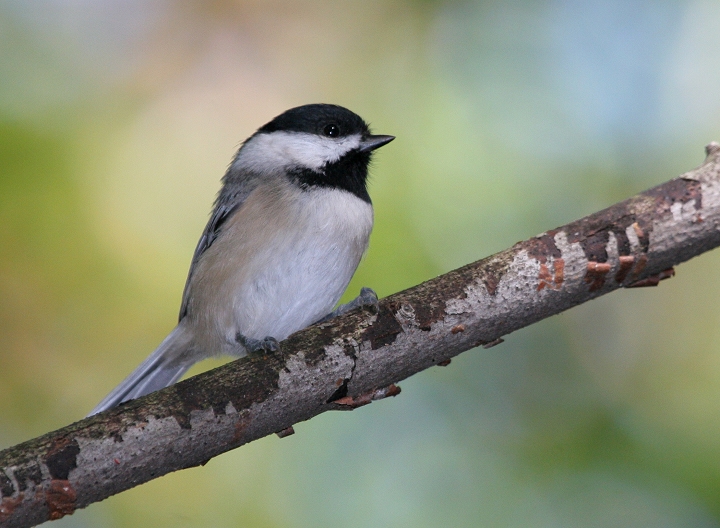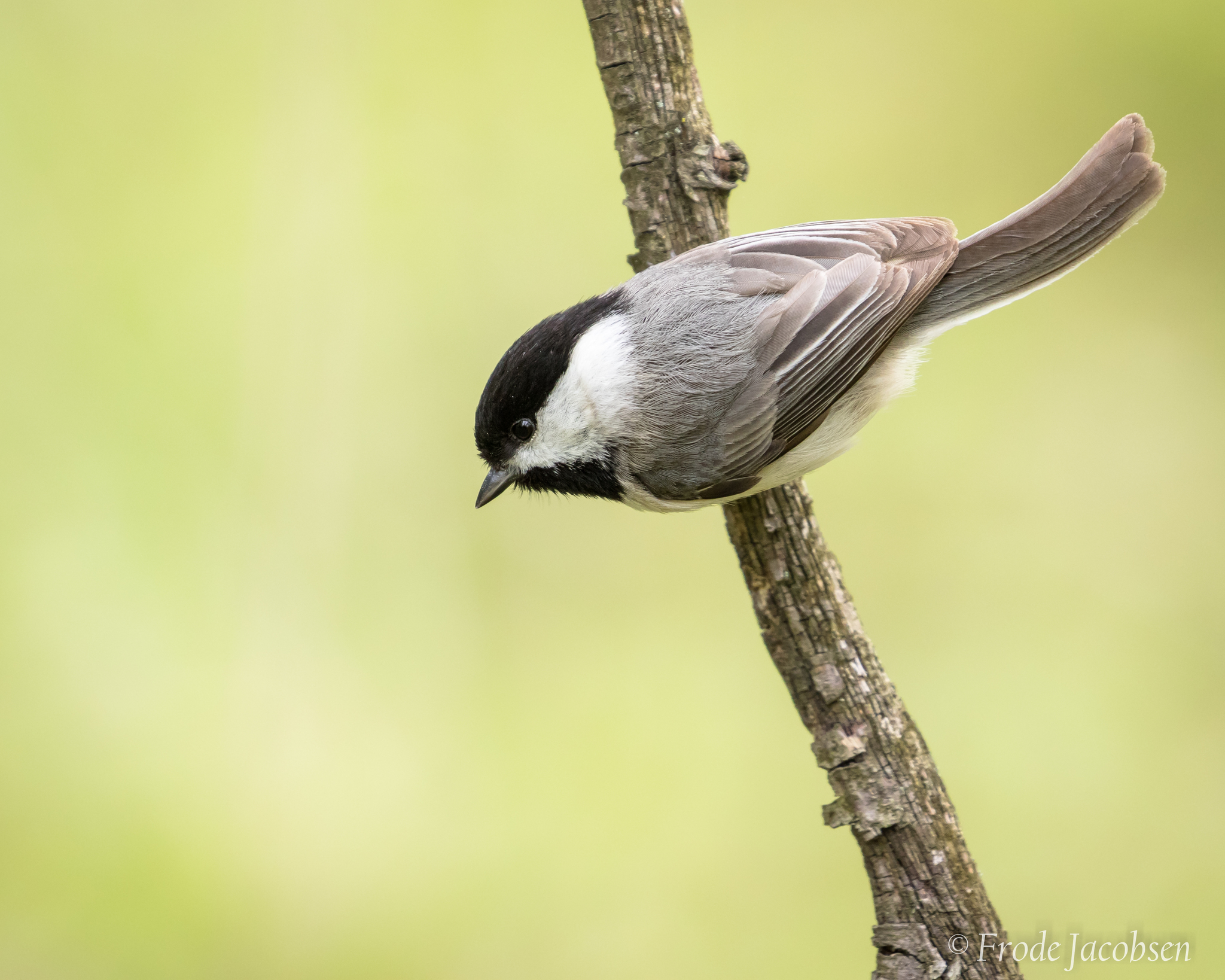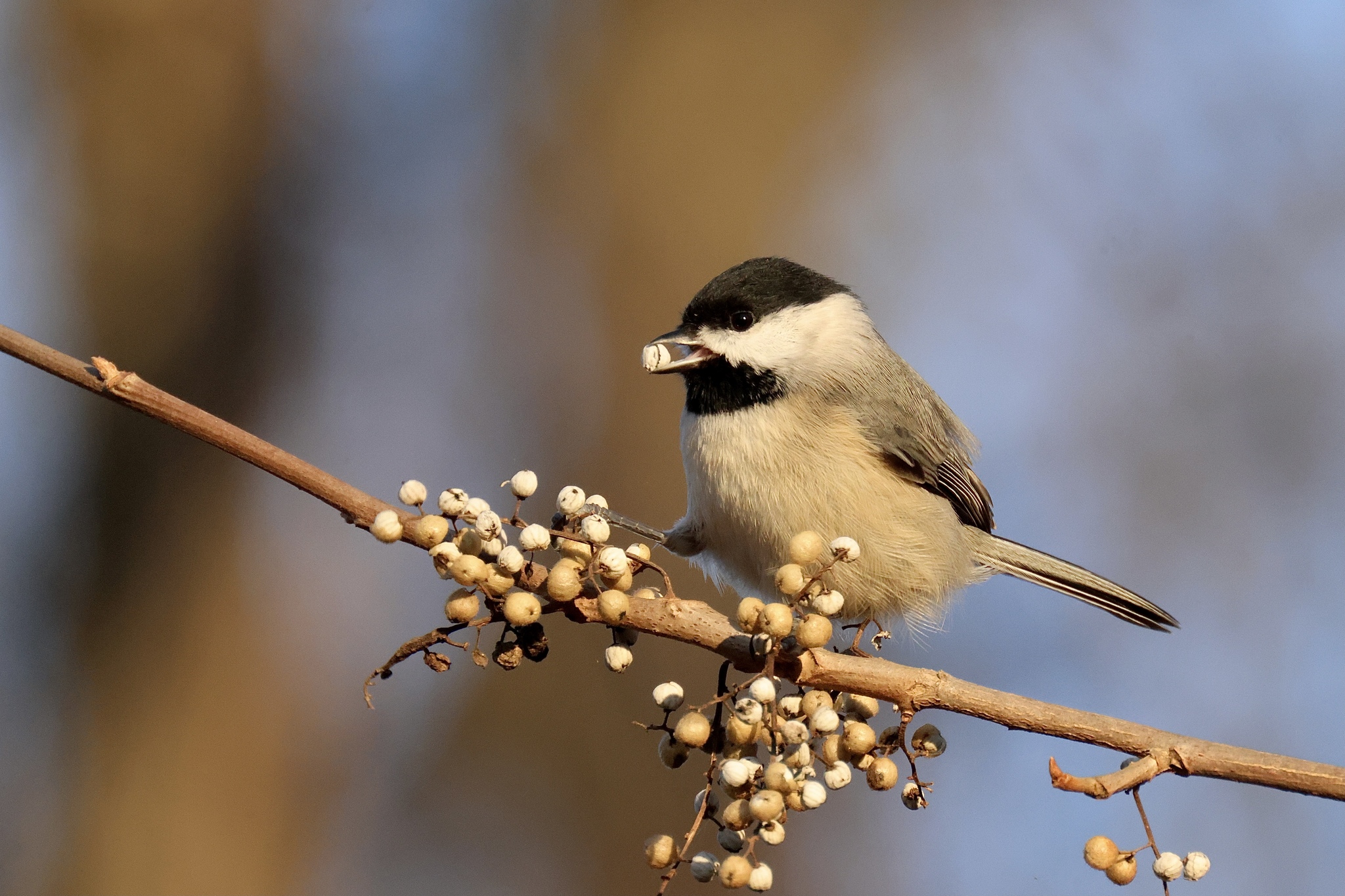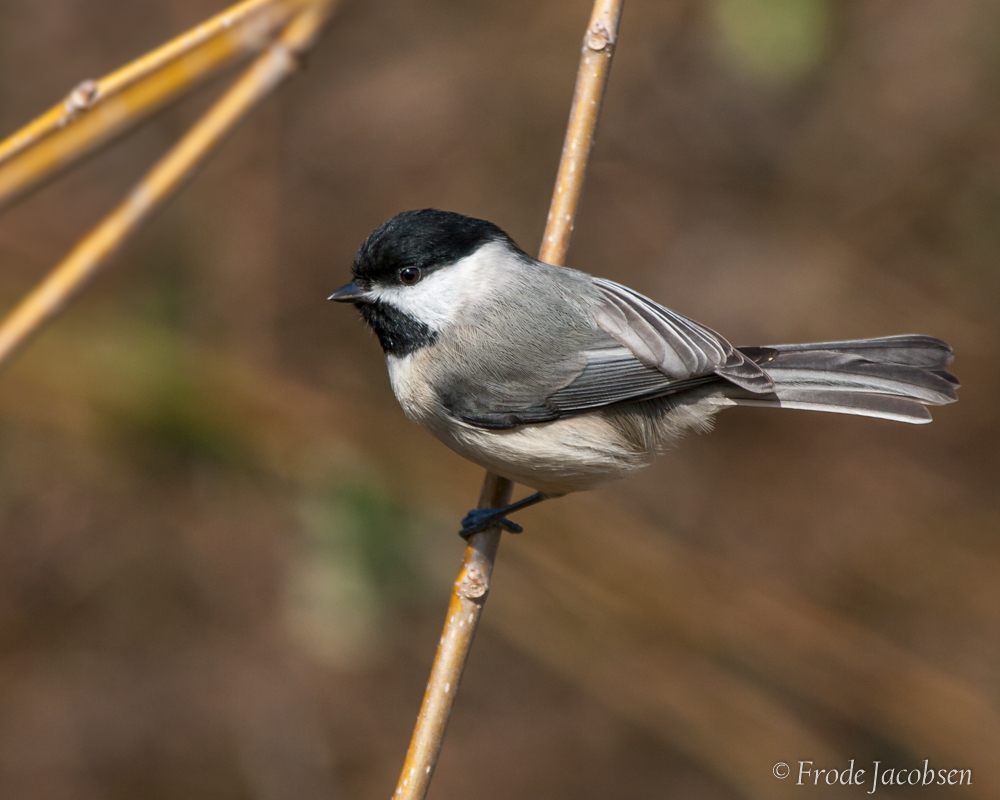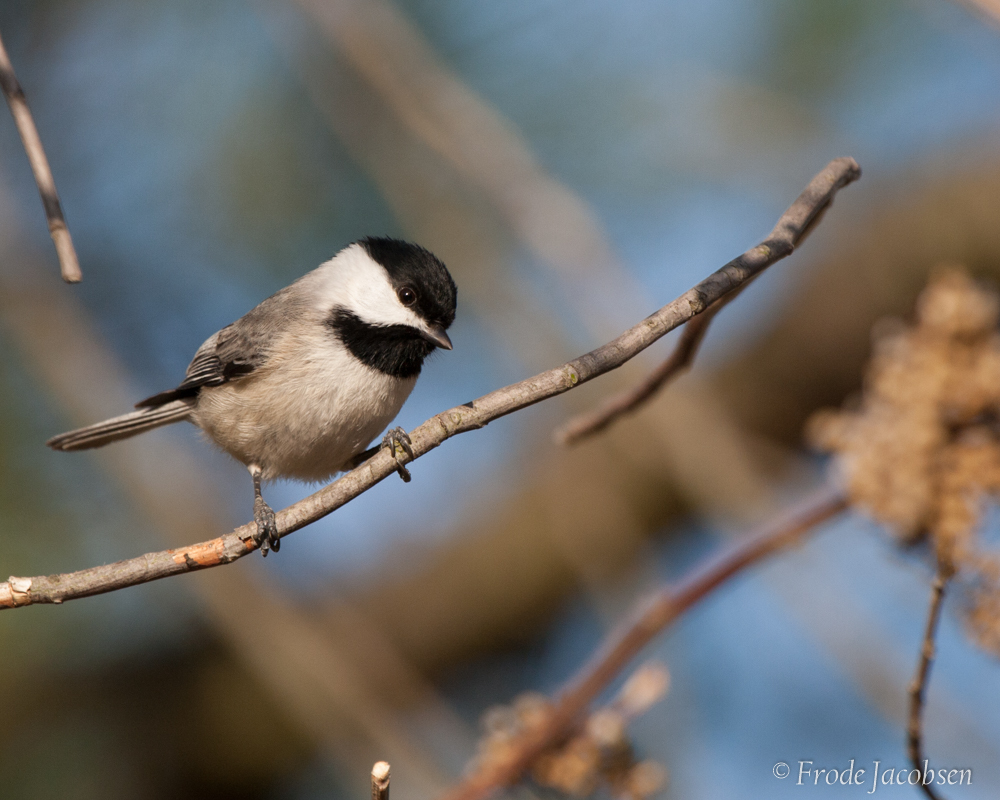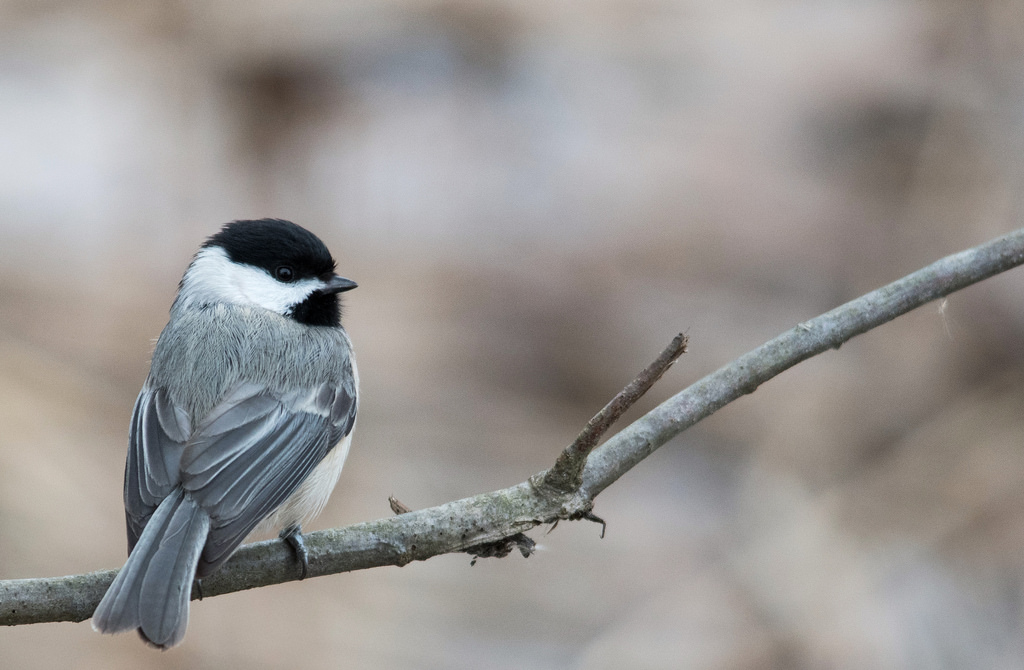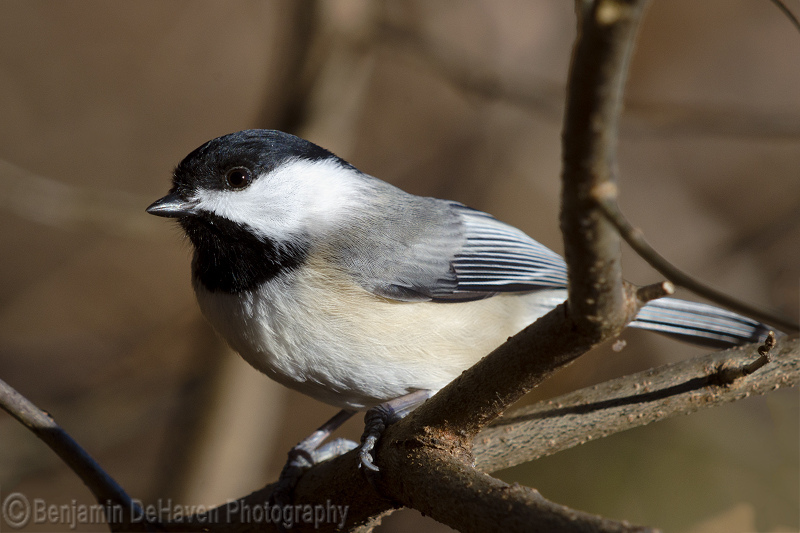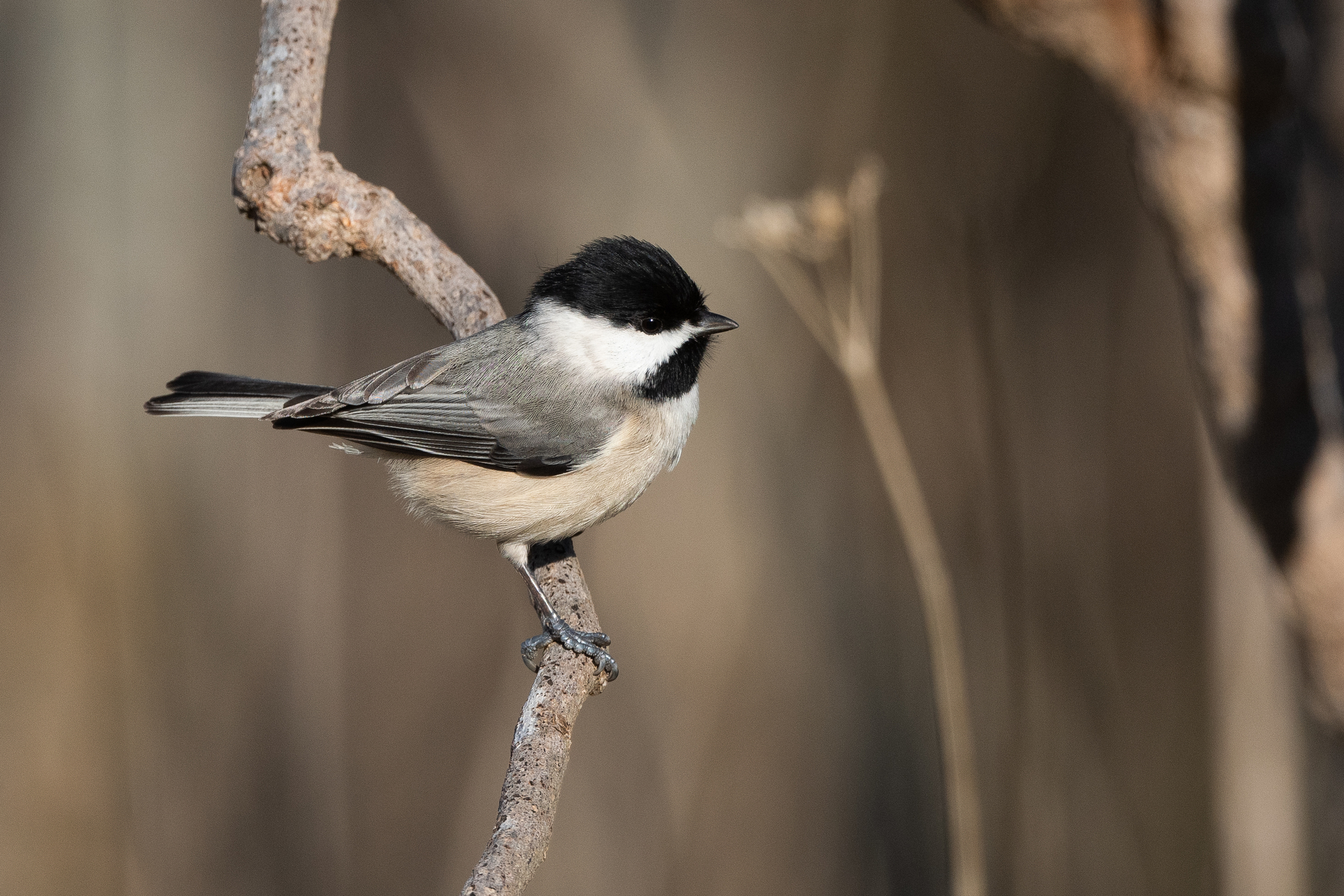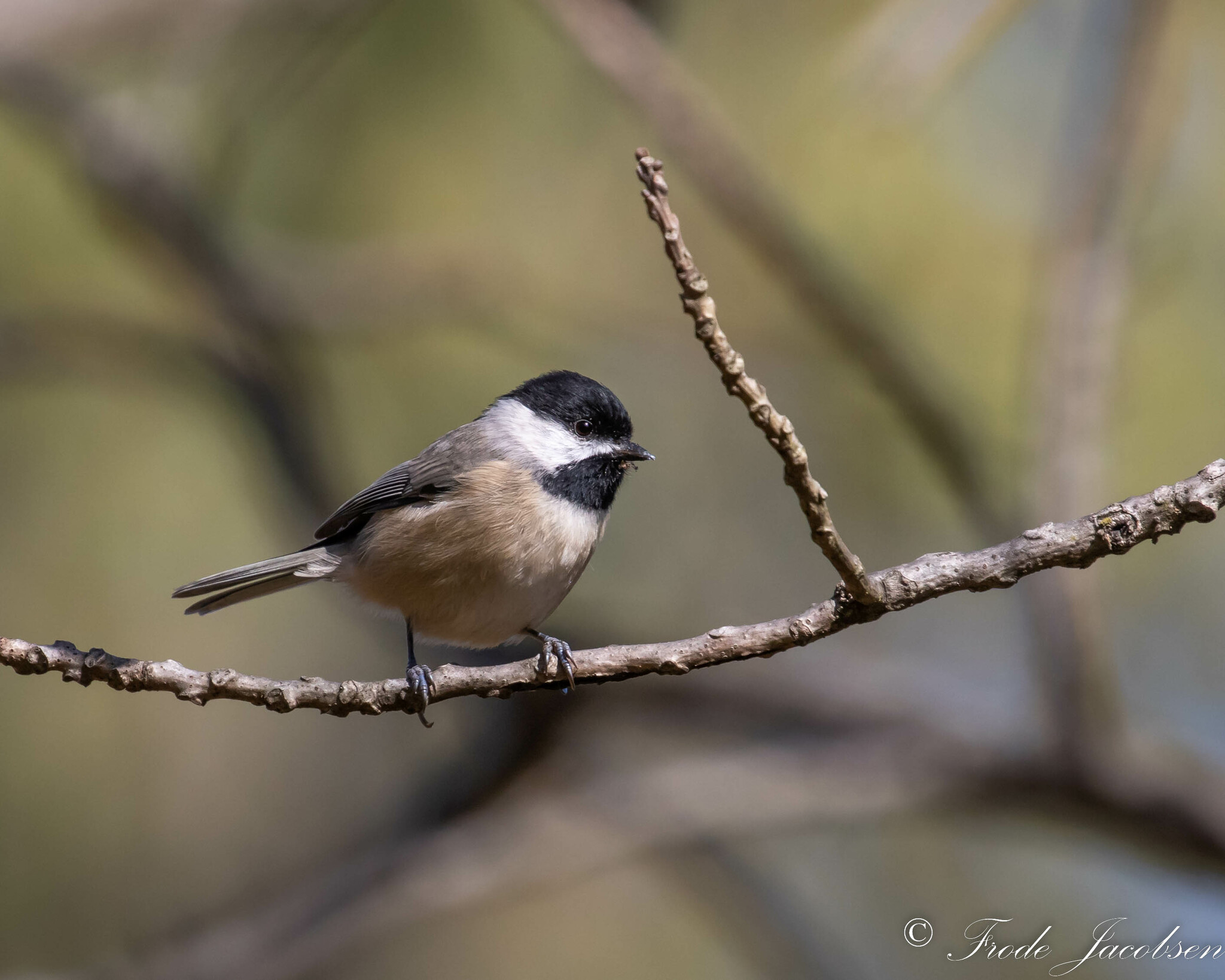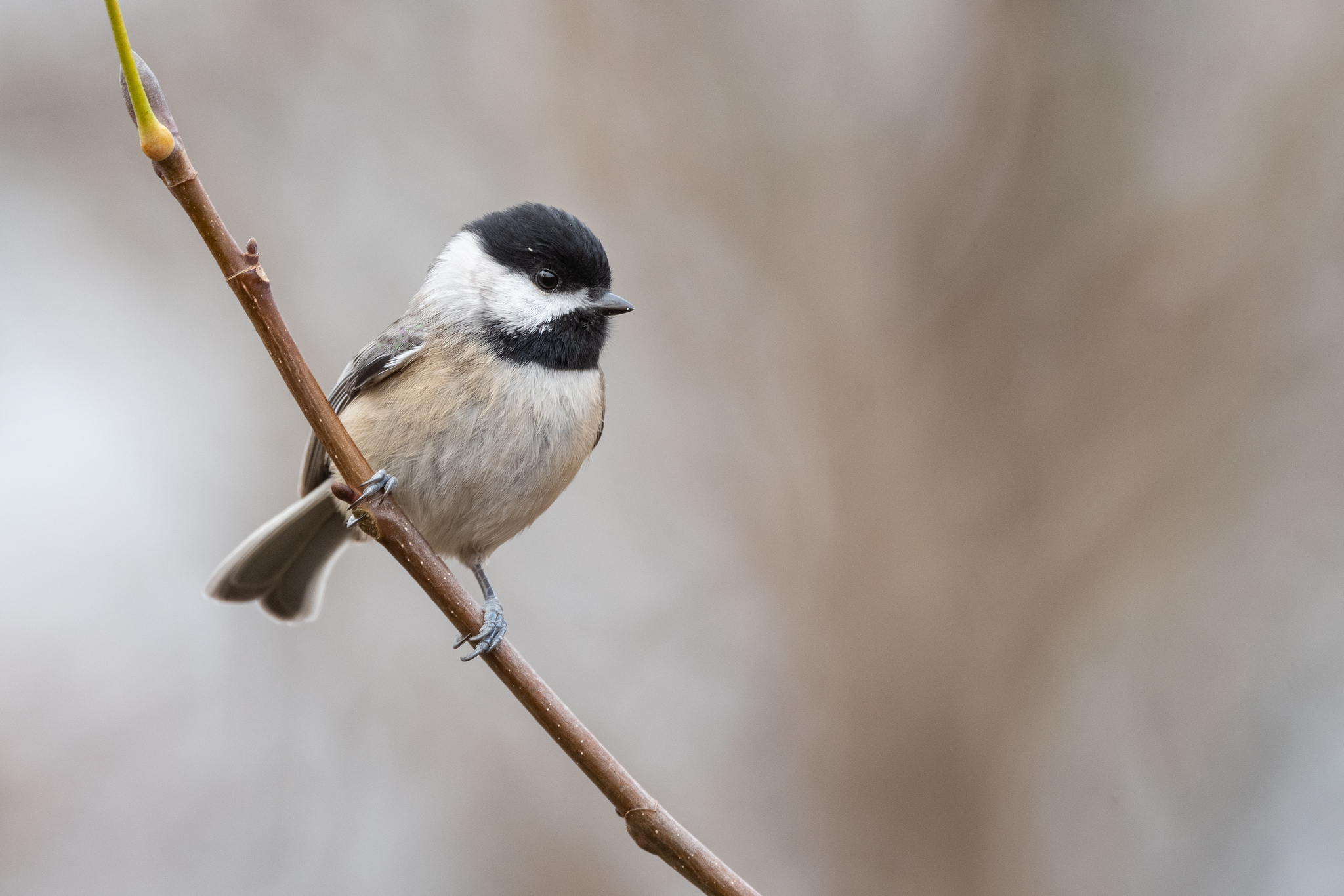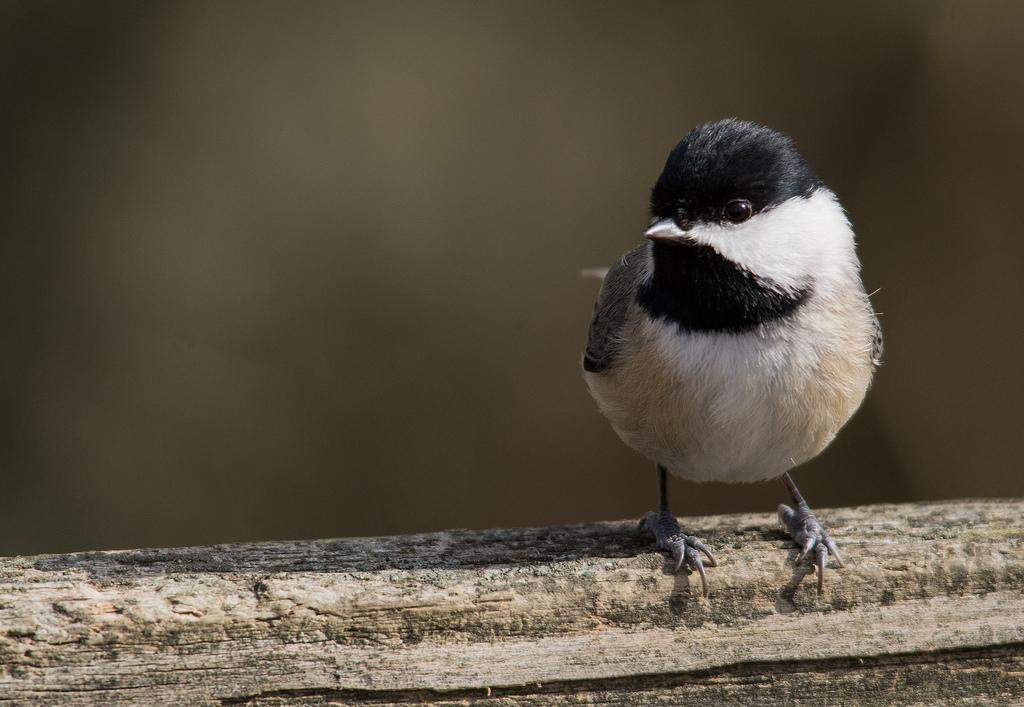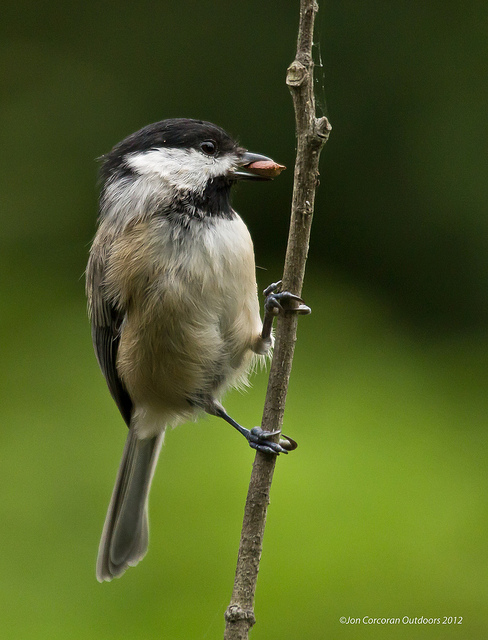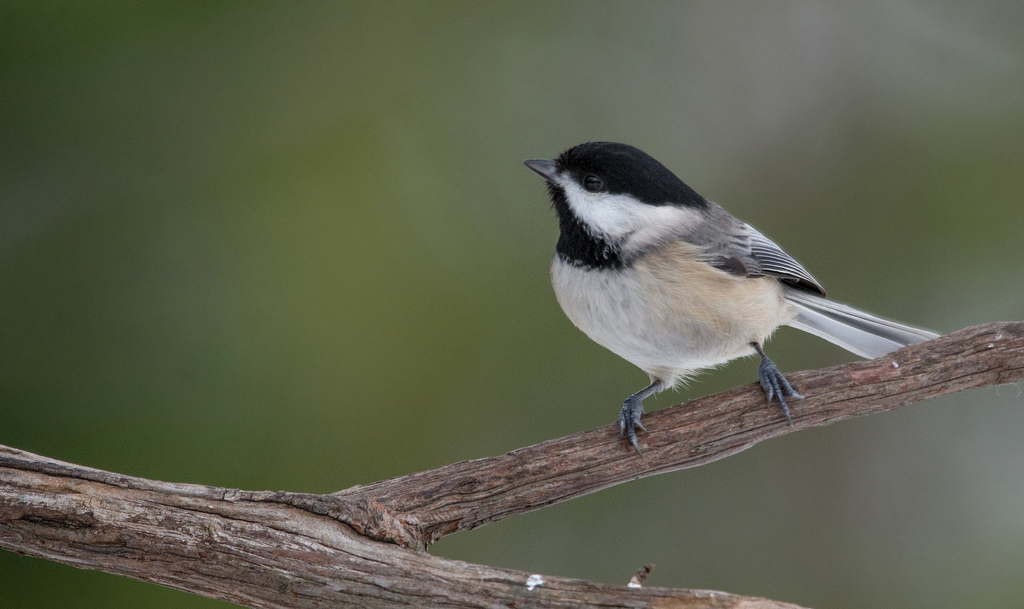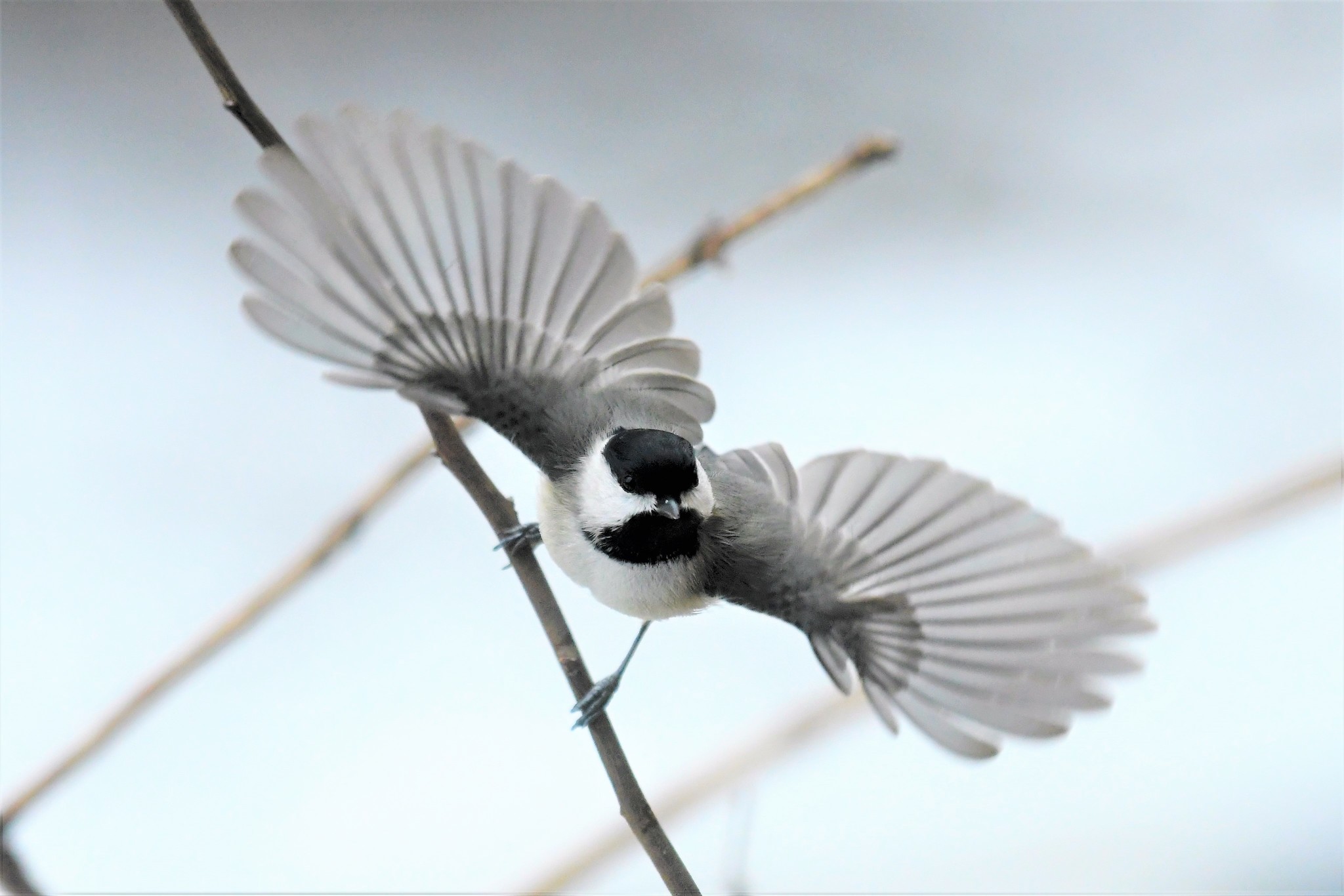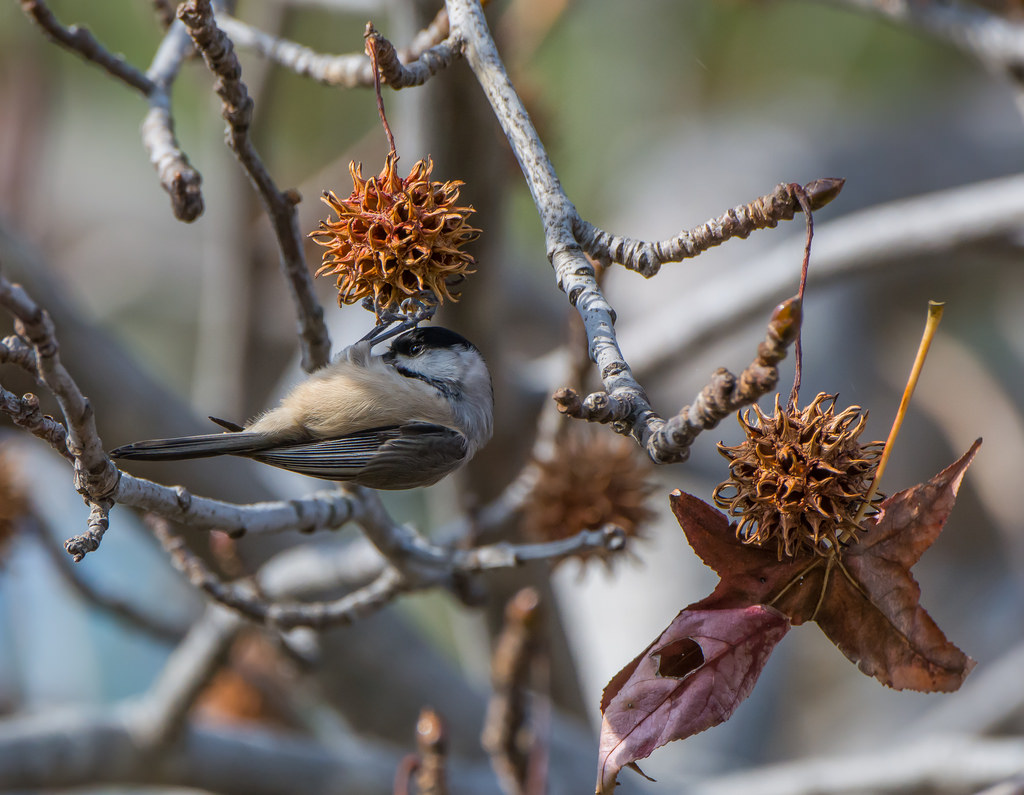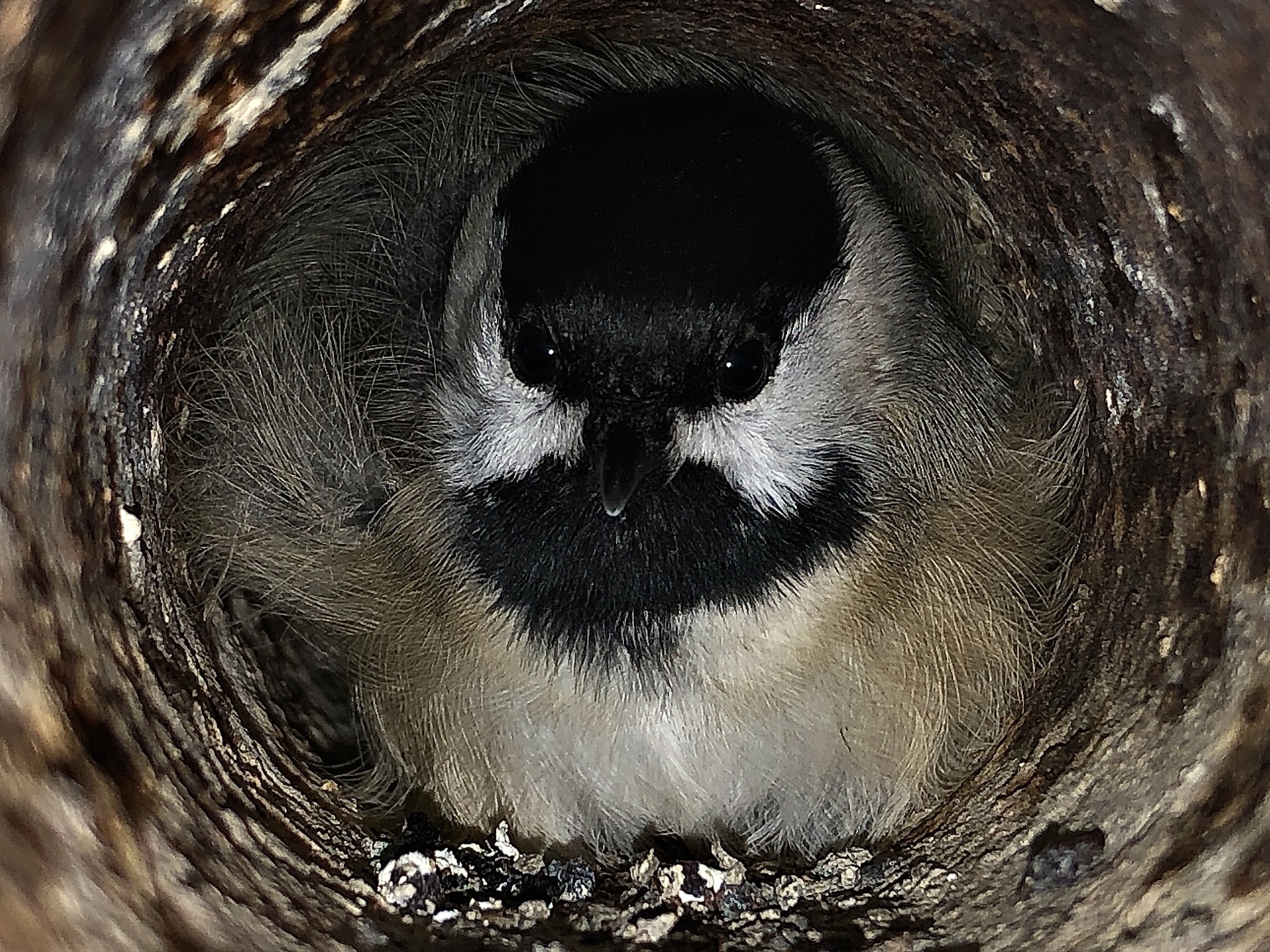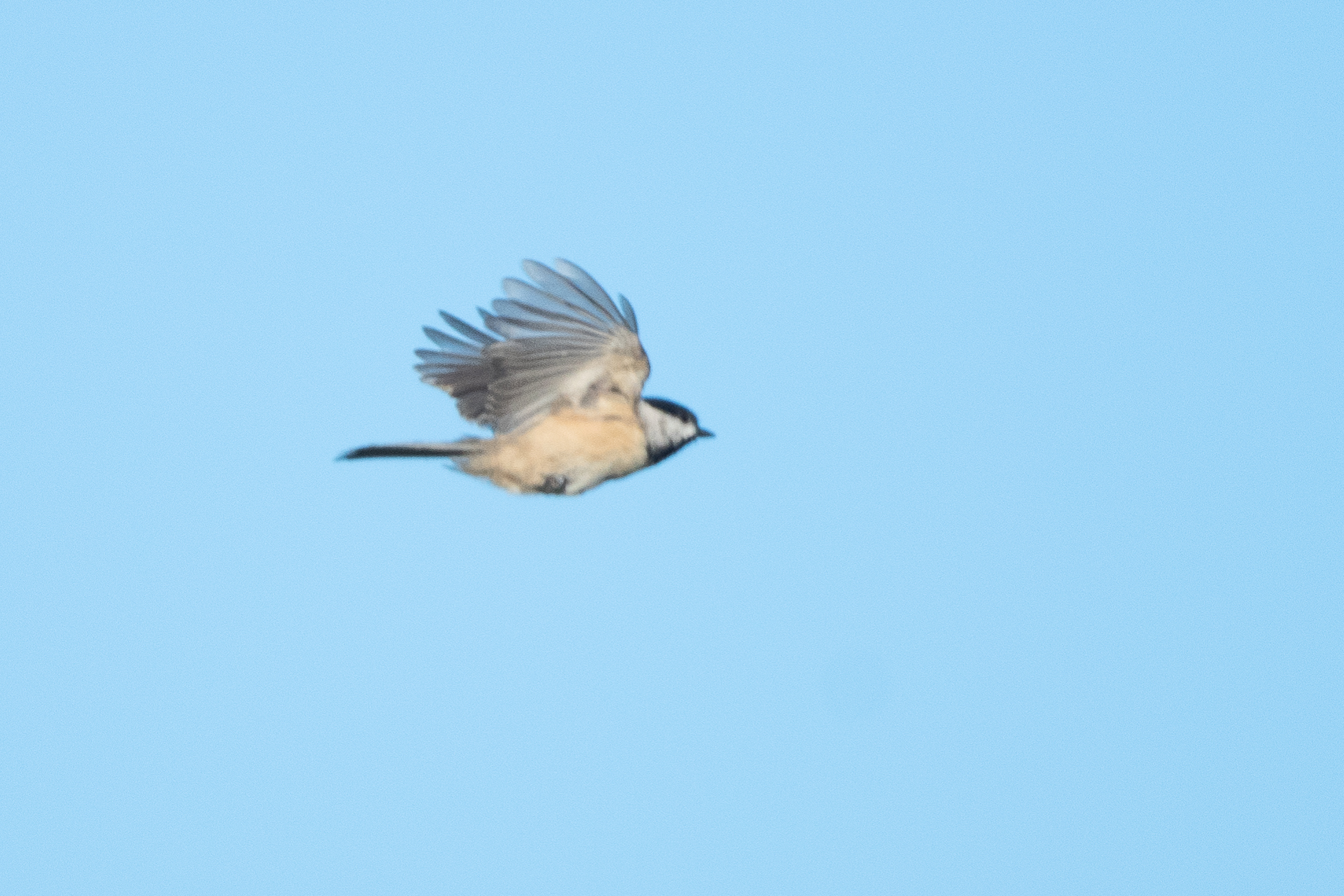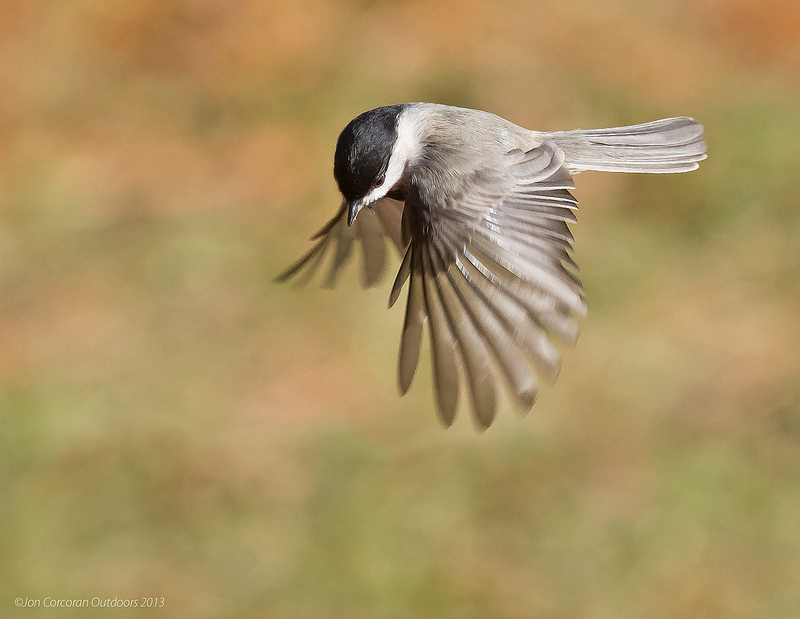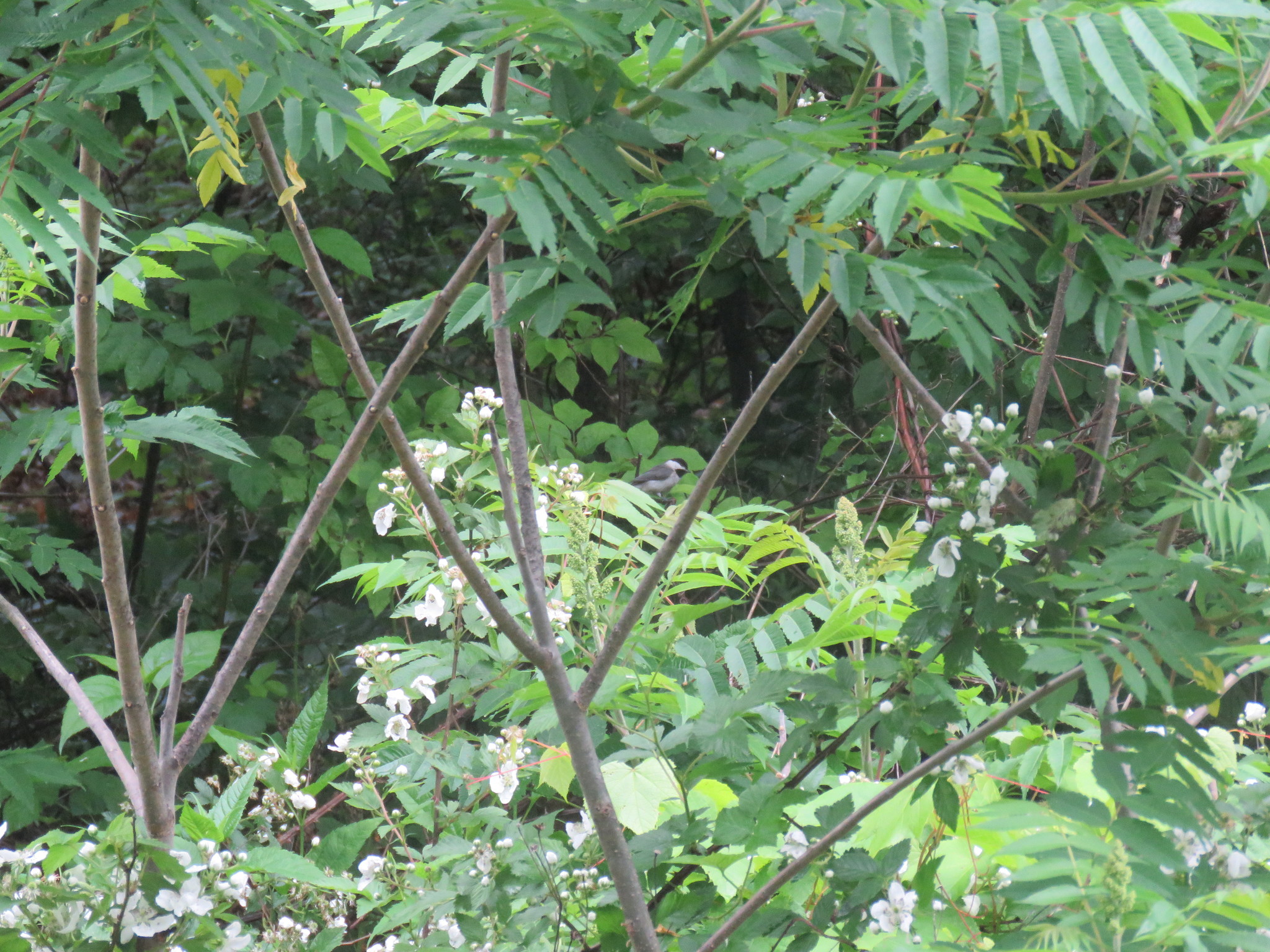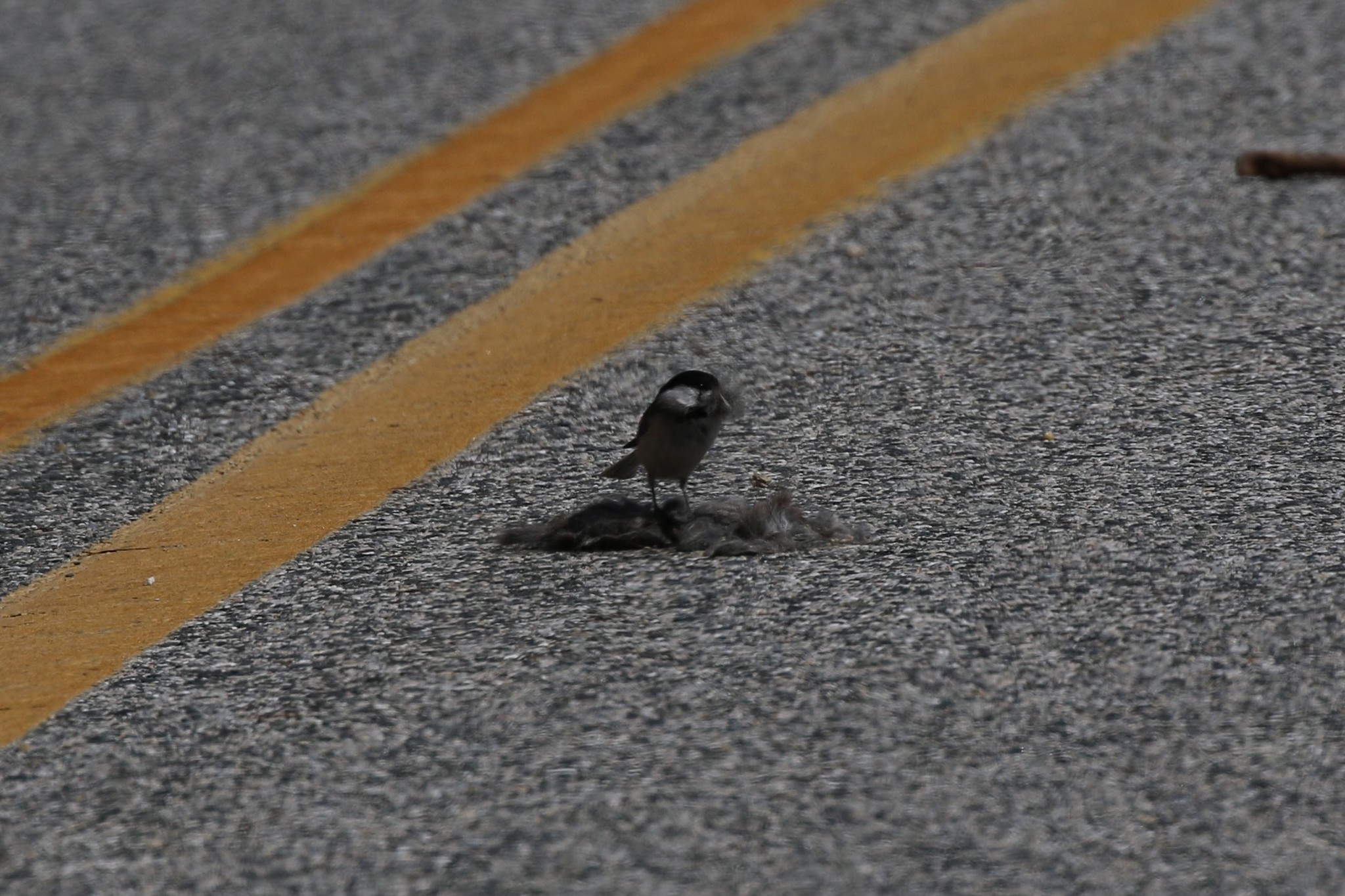Map Snapshot

























1,686 Records
Carolina Chickadee in Montgomery Co., Maryland (3/31/2022). (c) Stephen John Davies, some rights reserved (CC BY-NC). - Stephen John Davies via iNaturalist.
Status
Common resident throughout Maryland except in the western two counties, where it is replaced by Black-capped Chickadee. Hybrids are readily detected around Sideling Hill, such as on Woodmont Road in Washington County. Rare in Allegany County and Garrett County.
Description
Note the silvery-gray edges to the inner greater coverts and secondaries, lacking the white hockey stick pattern of Black-capped. The white cheek patch grays toward the black nape where the border is rounded, not squared as in Black-capped. Typically has a cleaner edge to the bib and a shorter tail than Black-capped. Song is 3-4 notes versus the 2-note song of Black-capped. Other Black-capped vocalizations are lower and slower.
Seasonality Snapshot
Source: Wikipedia
This article includes a list of general references, but it lacks sufficient corresponding inline citations. (October 2013) |
| Carolina chickadee | |
|---|---|

| |
| Scientific classification | |
| Domain: | Eukaryota |
| Kingdom: | Animalia |
| Phylum: | Chordata |
| Class: | Aves |
| Order: | Passeriformes |
| Family: | Paridae |
| Genus: | Poecile |
| Species: | P. carolinensis
|
| Binomial name | |
| Poecile carolinensis (Audubon, 1834)
| |

| |
| Range of P. carolinensis | |
| Synonyms | |
|
Parus carolinensis | |
The Carolina chickadee (Poecile carolinensis) is a small passerine bird in the tit family Paridae.
Taxonomy
[edit]The Carolina chickadee was often placed in the genus Parus with most other tits, but mtDNA cytochrome b sequence data and morphology suggest that separating Poecile more adequately expresses these birds' relationships.[2] The American Ornithologists' Union has been treating Poecile as distinct genus since 1998.[3] Although it and the black-capped chickadee most likely diverged about 2.5 million years ago, the birds still hybridize in the areas where their ranges overlap.[4] The offspring of mated pairs of hybrid chickadees suffer from lower hatching success, and a male bias sex ratio, consistent with Haldane's rule.[5]
Description
[edit]Adults are 11.5–13 cm (4.5–5.1 in) long with a weight of 9–12 g (0.32–0.42 oz), and have a black cap and bib with white sides to the face. Their underparts are white with rusty brown on the flanks; their back is gray. They have a short dark bill, short wings and a moderately long tail. Very similar to the black-capped chickadee, the Carolina chickadee is distinguished by the slightly browner wing with the greater coverts brown (not whitish fringed) and the white fringing on the secondary feathers slightly less conspicuous; the tail is also slightly shorter and more square-ended. Without calls, visual distinction between the two species is very difficult even with an excellent view.
Eggs are about 1.5 cm (0.6 in) long and 1.1 cm (0.4 in) wide. Eggs are white with areas of reddish-brown ranging from dots to small blotches.[4]
Vocalization
[edit]The calls and song between the Carolina chickadee and the black-capped chickadee differ subtly to an experienced ear: the Carolina chickadee's chick-a-dee call is faster and higher pitched than that of the black-capped chickadee, and the Carolina chickadee has a four note fee-bee-fee-bay song, whereas the black-capped omits the high notes.[6]
The most famous call is the familiar chick-a-dee-dee-dee,[citation needed] which gave this bird its name. Its song is fee-bee-fee-bay.
Distribution and habitat
[edit]
Their breeding habitat is mixed or deciduous forests in the United States from New Jersey and Pennsylvania west to southern Kansas and south to Florida and Texas; there is a gap in the range at high altitudes in the Appalachian Mountains where they are replaced by their otherwise more northern relative, the black-capped chickadee.
They are permanent residents, not usually moving south even in severe winter weather.
Diet
[edit]These birds hop along tree branches searching for insects, sometimes hanging upside down or hovering; they may make short flights to catch insects in the air. Insects form a large part of their diet, especially in summer; seeds and berries become important in winter. They sometimes hammer seeds on a tree or shrub to open them; they also will store seeds for later use. Carolina chickadees commonly make use of feeders.[4]
Behavior
[edit]During the fall migration and winter, chickadees often flock together in flocks of 8–10 birds. Each of the birds in a flock has a rank; while highly ranked birds will remain on the flock's territory for breeding, lower-ranked birds must find new breeding territory. Many other species of birds, including titmice, nuthatches, and warblers can often be found foraging in these flocks. Mixed flocks occur about 50% of the time. Mixed flocks stay together because the chickadees call out whenever they find a good source of food. This calling out forms cohesion for the group, allowing the other birds to find food more efficiently.[4]
Carolina chickadees actively defend individual spaces of 2–5 ft (0.6–1.5 m) apart; if another bird encroaches on these spaces, the dominant bird may make gargle calls. At feeders, these birds will usually take a seed and fly to a branch isolated from other birds to eat it.[4]
These birds usually sleep in cavities, though they may sleep in branches. Different members of a flock will sleep in the same cavity from night to night. While females usually sleep in the nest cavity, males will normally sleep on a nearby branch.[4]
Breeding
[edit]They nest in a hole in a tree; the pair excavates the nest, using a natural cavity or sometimes an old woodpecker nest. They may interbreed with black-capped chickadees where the ranges overlap, which can make identification even more difficult. The female will build the nest out of moss and strips of bark; she will then line it with hair or plant fibers. Clutches are usually made up of 3–10 eggs with an incubation period of 12–16 days. The nestling period is usually 16–19 days.[4]
Temperature regulation
[edit]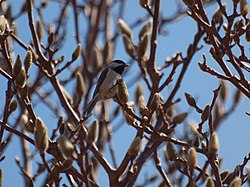
Carolina chickadees are able to lower their body temperatures to induce an intentional state of hypothermia called torpor. They do this to conserve energy during extremely cold winters. In extreme cold weather conditions they look for cavities where they can hide in and spend up to fifteen hours at a time in torpor. During this time they are awake but unresponsive; they should not be picked up and handled at this time because the stress of being held may cause death.[7]
References
[edit]- ^ BirdLife International (2016). "Poecile carolinensis". IUCN Red List of Threatened Species. 2016: e.T22711708A94306849. doi:10.2305/IUCN.UK.2016-3.RLTS.T22711708A94306849.en. Retrieved 12 November 2021.
- ^ Gill, Frank B.; Slikas, Beth; Sheldon, Frederick H. (1 January 2005). Fleischer, R. C. (ed.). "Phylogeny of Titmice (Paridae): II. Species Relationships Based on Sequences of the Mitochondrial Cytochrome-B Gene". The Auk. 122 (1): 121–143. doi:10.1093/auk/122.1.121. ISSN 1938-4254.
- ^ American Ornithologists' Union. 1998. Check-list of North American birds. 7th edition Washington, D.C.: American Ornithologists' Union.
- ^ a b c d e f g "Carolina Chickadee Overview, All About Birds, Cornell Lab of Ornithology". www.allaboutbirds.org. Retrieved 18 November 2021.
- ^ Driver, R; Ferretti, V; Burton, E; McCoy, M; Curry, R (2022). "Spatiotemporal variation in hatching success and nestling sex ratios track rapid movement of a songbird hybrid zone". The American Naturalist. 200 (2): 264–274. doi:10.1086/720207. PMID 35905404. S2CID 247888374.
- ^ Todd M Freeberg (2006) Social Complexity Can Drive Vocal Complexity: Group Size Influences Vocal Information in Carolina Chickadees. DOI 10.1111/j.1467-9280.2006.01743
- ^ Del Hoyo, J., Elliot, A., & Christie D. (eds). (2007). Handbook of the Birds of the World. Volume 12: Picathartes to Tits and Chickadees. Lynx Edicions. ISBN 978-84-96553-42-2
External links
[edit]- Carolina chickadee at BirdHouses101.com
- Carolina chickadee bird sound at Florida Museum of Natural History
- "Carolina chickadee media". Internet Bird Collection.
- Carolina chickadee photo gallery at VIREO (Drexel University)
